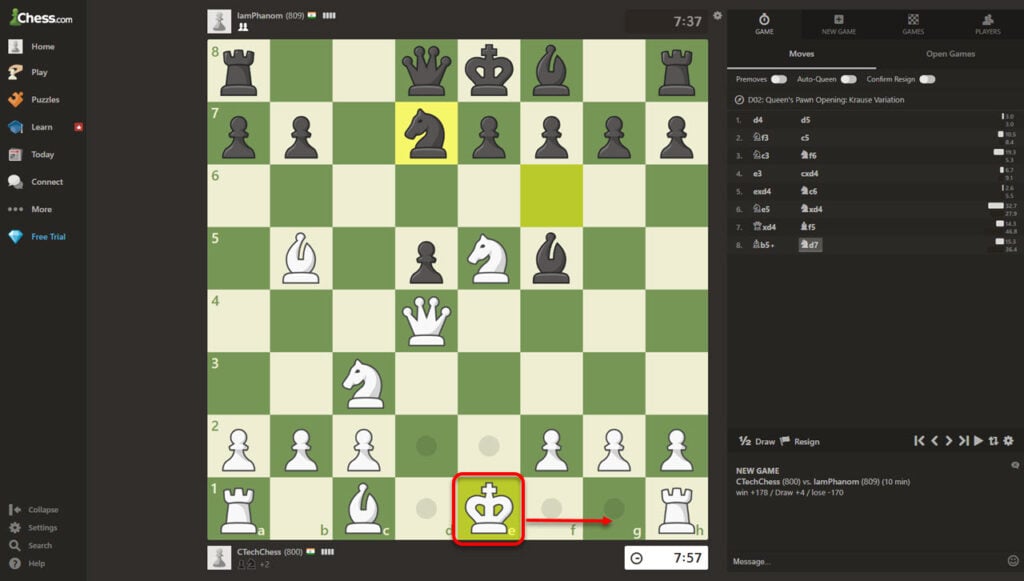While Chess has been around for tens of centuries, albeit in different forms, it is estimated that castling was introduced to the game in the 1300s and modified through the 1700s in the form that we see it today.
It is a widely known fact that the king in a game of Chess can only move one square at a time, except when it castles; in which case it moves two squares towards either of the rooks (king or queen’s side) and the rook moves past the king into an adjacent square.
Each player can only castle once in a game and if you’ve been trying to do that on Chess.com, but are failing, here we’ll help you castle on Chess.com on its website or mobile app easily. But before we begin understanding how to castle, it’s important that you remember the rules for castling in Chess, which are universal and not specific to Chess.com.
Castling can only be done if:
- The king or the rook haven’t moved in the game yet from their starting squares.
- The king isn’t in check.
- The squares between the king and rook are empty.
- None of the squares between the king and the rook are being attacked, including the one that the king is going to occupy after castling.
Also read: How to check the ping on Chess.com?
How to castle on Chess.com on PC and Mobile?
If all of the requirements mentioned above to castle are met, click on your king and you’ll see the dots above the squares it can move. Notice that you’ll see two dotted squares in the direction of the rooks.

Click on the second dotted square towards the direction of the rook you want to castle and you’ll see that not only does the king move two squares but the rook also moves two or three squares, in a short or long castle, respectively.

Make sure you click or tap on the furthest square away from your king in the direction of the rook to castle. If you move the king a single square by mistake, you won’t be able to castle during the game anymore.

Also read: How to choose the default theme on Chess.com?
Should you castle?
Castling is generally considered a good move and people often try to stop their opponent’s from doing it by having them move their rook or king. However, timing is an important factor; so, if you’re not careful and are castling mid or late game — less likely scenario — you can end up losing the game pretty quick.
So, if you get a chance, you should definitely consider castling in Chess as it can also make or break your game. Quite often, amateurs don’t castle and end up exposing their king as they develop pieces.
How does castling help?
Castling can help a lot in not only protecting your king by pushing it behind a wall of pawns and rook but also strengthen your position towards the middle of the board by opening the rook to the centre, which had previously languished on the corner squares of the board, not being very helpful.
Also read: How to change the profile picture on Chess.com?
Long vs Short castle
That’s really up to you; some people like to long castle towards the queen’s side but that’s not always easy as you’ve got to deal with clearing and developing more pieces.
If you’re looking to castle at the earliest without putting your queen in a dicey position, you should consider a short castle towards the king’s side.
If you’re doing so later in the game, it will also depend where your pieces are developed more and if your gameplay is more aggressive or defensive. If you’re going in for the kill, make sure you aptly protect your king by castling on either side so that it’s not caught in a counter-attack. However, if you’re playing defensive, it makes more sense to castle towards the side where you’ll be able to better defend your king.
Also read: How to change your username or profile name on Chess.com?






